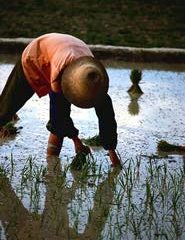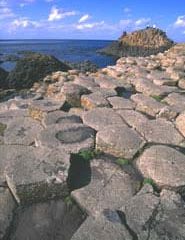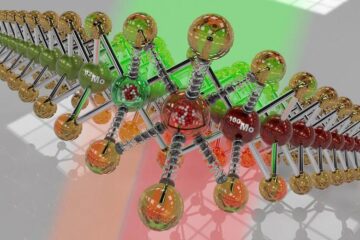Latest News

China leads GM revolution
Government funding puts Chinese plant biotechnology second only to US
While westerners vacillate about the risks and benefits of genetically modified (GM) crops, China is embracing the technology. A new survey shows that the Chinese are working on more plant biotechnology products than anyone outside North America1.
Chinese research institutes claim to have developed 141 GM plants, 65 of which have been approved for release into the environment. Scott Rozelle, an agricultura

Noise quietens driving
Sensors and loudspeakers reduce in-car racket.
Tired of shouting to your passenger as you drive, striving to make your voice heard over the rumble of the car? Help is on the way, in the form of strategically placed sensors and loudspeakers.
Researchers at the Korea Advanced Institute of Science and Technology (KAIST) in Taejon have developed a prototype system that shaves up to 6 decibels off the typical motoring noise of around 60 decibels. That’s more than any other co

Stress relief caused Giant’s Causeway
Ireland’s huge hexagonal columns are a natural consequence of lava cooling.
The Giant’s Causeway is not the work of men or monsters, but a natural consequence of how lava cools and solidifies, new computer simulations suggest.
The causeway is a field of roughly hexagonal basalt columns up to 40 feet high on the shores of County Antrim in Northern Ireland. It arose when a flow of volcanic rock split into hexagonal columns to relieve stress, according to Eduardo Jagla

Derrida`s deconstruction to help safety industry
A technique used by academics to analyse poetry may soon help industry to find out whether computer safety systems really ARE safe. In a novel example of interdisciplinary academic work, English literature meets computing science in an project to design a decision-making framework for the safety industry.
Newcastle University researcher Jim Armstrong, who holds a first degree in English Literature and a PhD in Computing Science, is investigating how the technique ‘deconstruction’ – usually

Floodplains expert to train African environment managers
The delicate balance of life and death in Africa is nowhere more evident than on the banks of the continent`s mighty rivers. Rural communities depend on the rich silt brought down by rivers for farming but they are also at risk of devastating floods, as are urban dwellers in informal settlements that are often built on floodplains.
Dr Sue Marriott, reader in earth sciences at UWE`s Faculty of the Built Environment, is setting off this month to help with training environmental managers in fl

Proximity To Landfill Sites Linked To Increased Risk Of Congenital Chromosomal Abnormalities (p 320)
New data from a 1998 study to assess the potential risks of chromosomal abnormalities of residents living near landfill sites is detailed in a research letter in this week’s issue of THE LANCET. The findings suggest that the increased risk of chromosomal abnormalities is of a similar magnitude to the increased risk of non-chromosomal abnormalities previously reported.
Previous findings of the EUROHAZCON study (Lancet 1998; 352: 423–27) showed a 33% increase in the risk of non-chromosomal ano











